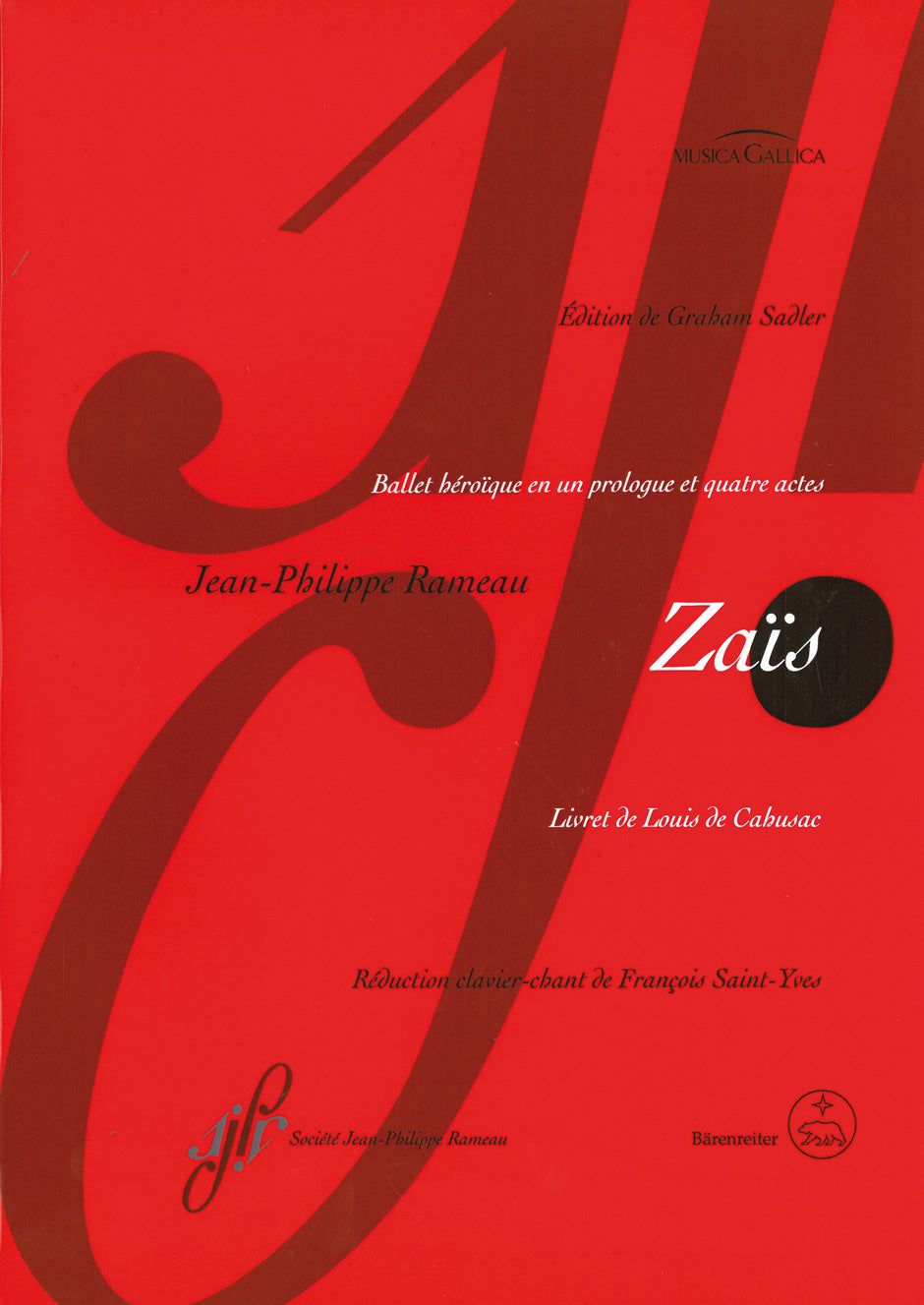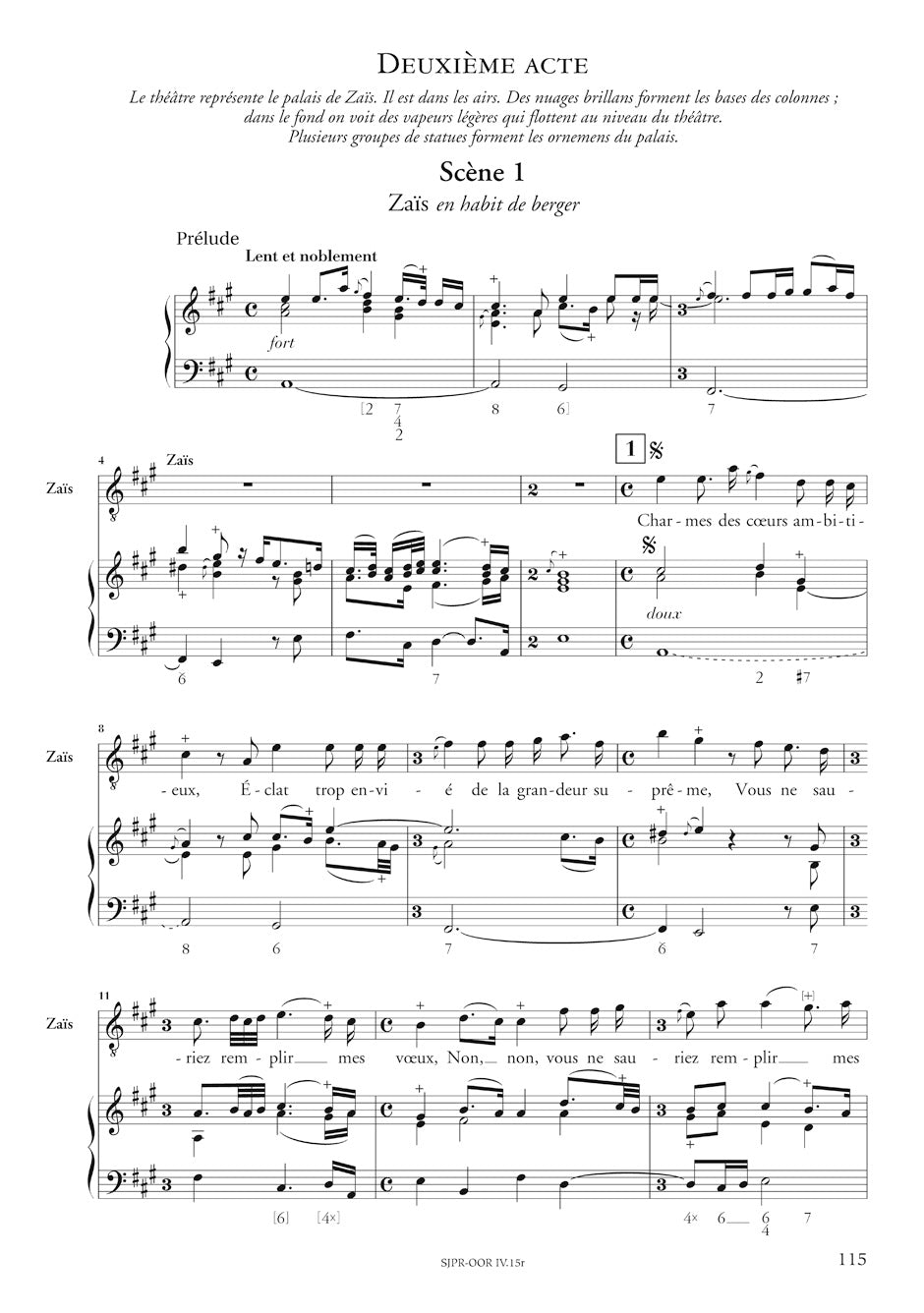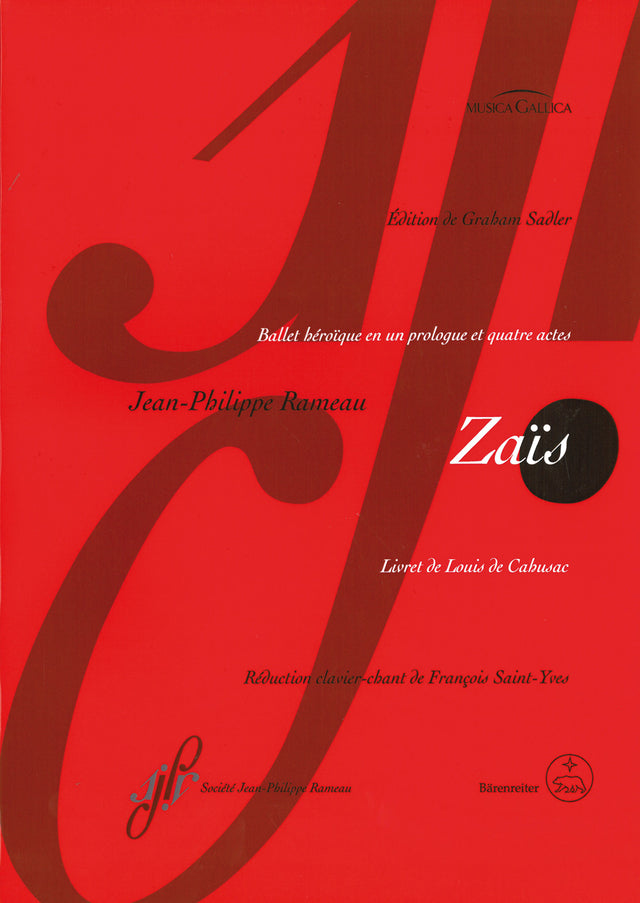Rameau: Zaïs
In stock and typically ships within 1 business day.
- Composer: Jean-Philippe Rameau (1683-1764)
- Editor: Graham Sadler
- Format: Vocal Score
- Instrumentation: Opera
- Work: Zaïs, RCT 60
- Work Language: French
- ISMN:
- Size: 7.5 x 10.6 inches
- Pages: 356
- Urtext / Critical Edition
Description
"Zaïs" was Rameau's first opera which was entirely devoted to "la féerie", the enchanted world of myth from the Middle East with its spirits and fantastic creatures. It was first performed on 29 February 1748 at the Paris Opera and was much praised for its expressive power, elegance and variety of its music as well as for the charm of its ballet.
Although the libretto by Louis de Cahusac was criticised, the delightful work proved very popular: it was revived in 1761 and 1769 and for more than two decades received over 100 performances. Like most of Rameau's operas, "Zaïs" was extensively revised during the composer's lifetime and afterwards. Revisions already began during the first rehearsals and continued until the first performance.
The composer and the librettist Cahusac finally used the Easter period in 1748 to work on those revisions; as well as structural changes and musical substitutions, these included some substantial additions to vocal and instrumental movements. The version which was performed after Easter is more convincing, both musically and dramatically. in contrast, the revivals of 1761 and 1769 – the first after Cahusac's death, the second after Rameau's – contained drastic cuts including the entire prologue.
For the new volume in the "Opera Omnia Rameau" the version from Easter 1748 has been chosen as the primary source. For performances, a choice can be made between this and the original version; a series of insertions links all the passages with another.
Publishers use a lot of words to describe what they sell, and we know it can be confusing. We've tried to be as clear as possible to make sure you get exactly what you are looking for. Below are descriptions of the terms that we use to describe the various formats that music often comes in.
Choral Score
A score for vocalists that only contains the vocal lines. The instrumental parts are not there for reference. Generally, cheaper than a vocal score and requires multiple copies for purchase.
Facsimile
Reproductions of the original hand-written scores from the composer.
Full Score
For ensemble music, this indicates that the edition contains all parts on a single system (there are not separate parts for each player). In larger ensembles, this is for the conductor.
Hardcover
Hardbound. Generally either linen-covered or half-leather.
Orchestral Parts
Similar to a wind set, this is a collection of parts. In the case of strings, the numbers listed are the number of copies included, though generally these are available individually (often with minimum quantities required).
Paperback
When publishers offer multiple bindings (e.g. hardcover) or study scores, this is the "standard" version. If you're planning to play the music, this is probably what you want.
Performance / Playing Score
A score of the music containing all parts on one system, intended for players to share. There are not separate parts for each player.
Set of Parts
For ensemble music, this indicates that there are separate individual parts for each player.
Solo Part with Piano Reduction
For solo pieces with orchestra, this is a version that contains a piano reduction of the orchestra parts. For piano pieces, two copies are typically needed for performance.
Study Score
A small (think choral size) copy of the complete score meant for studying, and not playing. They make great add-ons when learning concertos and small chamber works.
Vocal Score
A score prepared for vocalists that includes the piano/organ part or a reduction of the instrumental parts.
Wind Set
For orchestral music, this is a collection of wind and percussion parts. The specific quantities of each instrument are notated.
With Audio
In addition to the printed music, the edition contains recordings of the pieces. This may be an included CD, or access to files on the internet.
With / Without Fingering (Markings)
Some publishers prepare two copies - a pure Urtext edition that includes no fingering (or bowing) suggestions and a lightly edited version that includes a minimal number of editorial markings.




